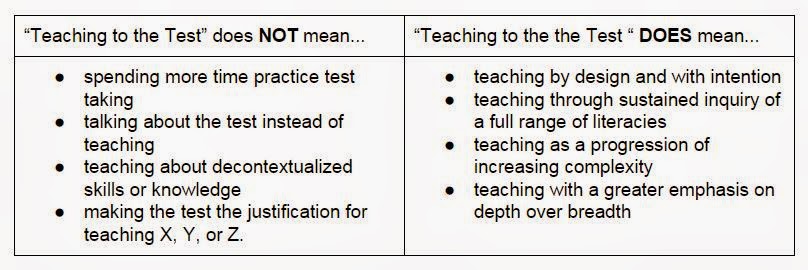Laura Adams, literacy consultant at the Wisconsin Department of Public Instruction, contributed today's post.
Professionally, this school year has been about
two things for me: speaking and listening and culturally responsive
practices. These areas have been the focus of my professional learning and,
consequently, the focus of professionally co-developed resources. As I reflect
on my journeys in these areas (which, like any area of professional growth, are
on-going), I think about the places that these areas intersect.
I like intersections because I think that’s
where meaningful learning and growth take place. Think about the intersection
between reading and writing, or coaching and teaching, or teaching and
learning, and at the point (or points) where those two things meet, you’ll find
new ideas and great a-ha moments that lead to new ways of thinking and doing.
So here are my reflections about the
intersection of speaking and listening and culturally responsive practices.
I speak and listen differently when I’m in
different groups (immediate family, extended family, friends, literacy
colleagues, colleagues in education, professional organizations, church groups,
etc.) because each group has different ways of speaking and listening. This is
probably not a new idea to you, my literacy-minded reader, but then I started
to think about how I learned what speaking and listening behaviors were
appropriate in the different groups I belong to. While I was growing up, there
was a great deal of emphasis placed on the speaking and listening practices
that occurred around the dinner table of my immediate family. My Dad was the
authority. We listened to him speak and responded when called upon. He would
ask follow-up questions or give directions about who was to complete which
household chore before the next dinner time. So, in other words, the speaking
and listening practices that I learned around the family dinner table set me up
for success in school.
And then I started to think: What if they
hadn’t? What if the speaking and listening behaviors so valued in my immediate
family, critical for me to understand in order to connect with and relate to
those people I was sharing space with day to day, were different from those
behaviors valued in a school setting? Would I have learned those academic
speaking and listening behaviors? Would I still have relied on observation to
teach me how to speak and listen in other groups? Would I have been able to
navigate back and forth between those worlds? Would I have graduated as an
honor roll student? Would I have received that university scholarship? Would I
be where I am today?
And, if that had been the case, how could my
teachers have helped me to achieve academic success?
First, I would have needed my teachers to
accept and respect me as I was versus being told that my speaking and listening
behaviors were wrong. Second, I would have needed lots of modeling and for my
teachers to reveal their thinking about how they said things or why they said
things the way that they did. Third, I would have needed lots of guided
practice in academic speaking and listening. Fourth, I would have needed that
practice to be engaging and meaningful; for it to be applied to a specific
situation or context that I could care about.
So what about you, my literacy-minded reader?
What speaking and listening behaviors are valued in your groups? How did you
learn them? What did you need to achieve academic success? And what can you do
tomorrow to support ALL your students?


